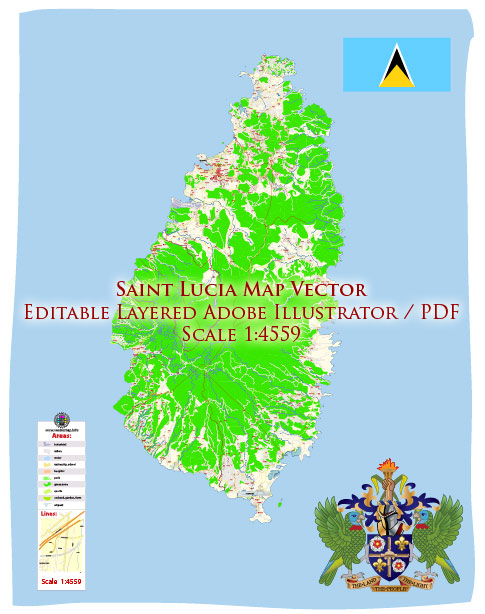Saint Lucia is a sovereign island country located in the eastern Caribbean Sea. Its history of urban development is influenced by a combination of indigenous cultures, European colonization, and contemporary economic and social factors. Here’s a brief overview:
- Indigenous Peoples: Before European colonization, the island was inhabited by the Arawak and Carib peoples. These indigenous communities lived in small villages and practiced agriculture, fishing, and hunting.
- European Colonization: Saint Lucia was first visited by Europeans in the late 15th century, with the Spanish being the earliest explorers. However, it wasn’t until the 17th century that the French and the British began to establish settlements on the island. The island changed hands between the French and the British several times during the 17th and 18th centuries.
- Plantation Economy: The European colonizers introduced a plantation economy based on sugarcane and other crops. This led to the establishment of larger estates and the development of urban centers near the coast to facilitate trade. Castries, the capital and largest city of Saint Lucia, emerged as a significant port and commercial center.
- Slavery and Emancipation: The plantation economy was heavily dependent on the labor of enslaved Africans. The abolition of slavery in the 19th century had a profound impact on the social and economic structure of the island. The decline of the sugarcane industry and the shift towards other crops influenced the urban landscape.
- Post-Independence Development: Saint Lucia gained independence from British rule in 1979. Since then, the country has undergone significant changes in its urban development. The government has invested in infrastructure, education, and healthcare, contributing to the growth of urban areas.
- Tourism Influence: In recent decades, tourism has become a major economic driver for Saint Lucia. This has led to the development and expansion of urban areas to accommodate the influx of visitors. Resorts, hotels, and other tourism-related infrastructure have shaped the urban landscape.
- Contemporary Urban Challenges: Like many small island nations, Saint Lucia faces challenges related to urban development, including issues such as limited land availability, infrastructure development, and environmental sustainability. Balancing economic growth with the preservation of natural resources and cultural heritage is an ongoing concern.
In summary, Saint Lucia’s history of urban development reflects the impact of colonization, the legacy of slavery, economic transitions, and contemporary influences such as tourism. The evolution of its urban centers has been shaped by a complex interplay of historical, social, and economic factors.


 Author: Kirill Shrayber, Ph.D.
Author: Kirill Shrayber, Ph.D.